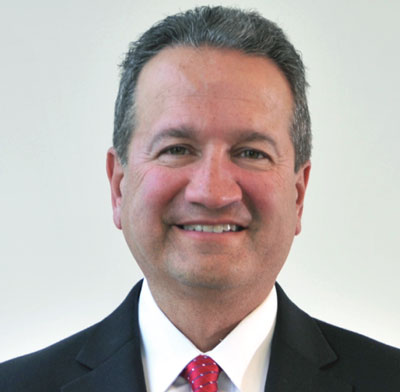In Hep B, Functional Cure Likely Means Two-Part Combination Process
Executive Summary
While current HBV drugs work well to suppress the virus, combination success in HIV and HCV is leading biopharmas to seek a multi-part approach to suppressing and clearing the virus, with limited-term therapy.
Companies working on next-generation drug therapies for hepatitis B have been talking about achieving a “functional cure” of the virus for several years now, but as candidates progress through the pipeline, consensus seems to be emerging about the best way to accomplish this.
“Functional cure” – meaning treating HBV with a temporary and largely curative regimen, similar to the drug cocktails used in HIV and hepatitis C – likely will require using an antiviral drug that suppresses the HBV virus more effectively than currently available drugs, augmented with an immunomodulatory agent.
The efforts of several of the companies working toward a functional cure are intertwined. ContraVir Pharmaceuticals Inc. is focused on tenofovir exalidex (TXL), a prodrug of tenofovir, the active agent in Gilead Sciences Inc.’s antiviral therapies for HIV and HBV – Viread (tenofovir disoproxil fumarate, or TDF) and Vemlidy (tenofovir alafenamide, or TAF). ContraVir also is advancing a cyclophilin inhibitor (CRV-431) toward the clinic, in the hopes of developing its own proprietary HBV combo regimen.
Meanwhile, Hopkinton-Mass.-based Spring Bank Pharmaceuticals Inc. and Vancouver-headquartered Arbutus Biopharma Corp. are partnered on a combination trial of their agents, but Arbutus, like ContraVir, thinks it may have the necessary pieces in-house for a proprietary combo. Spring Bank, which has the immunomodulator inarigivir (SB 9200) in Phase II, knows it will need an antiviral partner for combo therapy, but believes its drug may be the immunomodulatory backbone for most or all combo regimens.
Making matters even more interconnected, Spring Bank is collaborating with Gilead on a pair of studies investigating inarigivir with Viread and Vemlidy, causing at least one market analyst to speculate that the Foster City, Calif.-based firm may at some point look to acquire its partner. (Also see "Deal Watch: Gilead And Spring Bank Set Second Trial Collaboration In HBV" - Scrip, 14 Jul, 2017.) Spring Bank Chief Medical Officer Nezam “Nid” Afdhal heads Gilead’s Scientific Advisory Board and played a key role in clinical development of the virology giant’s HCV combo Harvoni (sofosbuvir/ledipasvir) as a hepatologist and researcher at Harvard University. Also, ContraVir’s CEO James Sapirstein is a former Gilead executive who led the global launch of Viread.
Gilead looms large in the hep B competition as its Vemlidy obtained US and EU approval in HBV in late 2016 and is becoming part of the standard-of-care these three clinical-stage companies are trying to surpass. (Also see "US, EU Nods For Gilead's Vemlidy To Enter Saturated Hep B Market" - Scrip, 11 Nov, 2016.)
How To Achieve “Functional Cure” Of Hep B
Along with the eventuality of combination therapy, another HBV treatment consensus has developed around the belief that reducing HBV surface antigen (HBsAg) will play a vital role in advancing toward a functional cure. Along with Gilead, Spring Bank, Arbutus (formerly Tekmira Pharmaceuticals Corp.) and ContraVir, other biopharmas focused on this approach include Arrowhead Pharmaceuticals Inc., Replicor Inc. and big pharma Johnson & Johnson.
Spring Bank’s Afdhal told Scrip that a functional cure will require suppressing the HBV virus even more completely than current therapies like Viread and Vemlidy do, then clearing the remaining cccDNA from liver cells.
HBV has a "unique replication strategy [that] enables its maintenance in infected hepatocytes," according to an article in the June issue of Viruses. "Both the stability of the HBV genome, which forms a stable minichromosome, the covalently closed circular DNA (cccDNA) in the hepatocyte nucleus, and the inability of the immune system to resolve chronic HBV infection are believed to be key mechanisms of HBV chronicity." The article notes that "a true cure of HBV requires clearance of intranuclear cccDNA from infected hepatocytes."
Afdhal noted it is difficult to target cccDNA because it resides in the nucleus of hepatocytes. HBV will be harder to cure than HCV, he added, because HBV is an archival virus – its cccDNA remains in hepatocytes even after the virus is largely suppressed, while in HCV, when a therapy successfully defeats the replication process, the virus eventually dies out.
Spring Bank Chief Medical Officer Nid Afdhal

Source: Spring Bank Pharmaceuticals Inc.
Spring Bank believes the logical approach to curing HBV is reducing viral production, perhaps with a direct-acting antiviral, and then adding an immunomodulator, like inarigivir, to clear cccDNA out of virally infected cells.
Inarigivir is an oral agonist of hepatic retinoic acid-reducible gene 1 (RIG-1), the body’s first line of defense against viruses ranging from hepatitis to influenza, Afdhal said. The compound is designed to restore the innate immune process in HBV-infected liver cells, but to make that effect specific to the liver. The goal is to provide targeted immune response in the liver, while avoiding off-target impacts seen with the initial cancer immunotherapies, the exec added.
Spring Bank presented data at the recent American Association for the Study of Liver Diseases (AASLD) annual meeting in Washington, DC, from the first two cohorts of the Phase II, dose-finding ACHIEVE study showing both viral suppression as well as reduced HBsAg and HBV viral RNA. In an Oct. 31 note, JMP Securities analyst Liisa Bayko noted that the antiviral benefit was not anticipated, but was seen in the lowest dose (25 mg daily) being tested in Phase II, and the company anticipates that the immunomodulatory benefit will become clearer with higher doses. The study recently began a third cohort testing a 100 mg dose of inarigivir.
While part A of ACHIEVE is a dose-ranging monotherapy portion of the trial, part B is testing inarigivir co-administered with Gilead’s TDF. In a cohort testing 12 weeks of 25 mg inarigivir followed by 12 weeks of TDF, the combination yielded a 2.9 log reduction in HBV RNA, which Bayko termed “impressive.” Under an agreement signed in July, Gilead will fund and conduct another Phase II combo trial testing inarigivir with its TDF follow-on TAF. Afdhal noted that Spring Bank also has arrangements for combination studies with Arbutus and Arrowhead.
Spring Bank hopes to complete both parts of ACHIEVE in 2018, and launch a Phase III study in 2019, likely at a 100 mg or 200 mg daily dose. By that time, it will have efficacy data in about 250 patients. Spring Bank is moving forward on a parallel course, advancing inarigivir as a solo agent so that clinicians can use it in any HBV combo regimen they choose, but it also hopes to obtain approval with another company for a single-pill combination regimen incorporating its drug, Afdhal explained.
ContraVir Taking On Tenofovir
ContraVir is developing TXL as a solo agent that could be a combo therapy backbone, but it is also looking to compete directly with Gilead with a version of tenofovir that may provide benefits greater than those offered by TAF. (Also see "ContraVir Hopes To Establish Backbone For Hepatitis B Combo Therapy" - Scrip, 25 Jul, 2016.) An ongoing Phase Ib/IIa study of TXL is expected to read out during the first quarter of 2018, according to Laidlaw & Co. analyst Francois Brisebois, who concluded in an Oct. 30 note that ContraVir’s recent decision to end development of Phase III valnivudine in post-herpetic neuralgia in shingles patients will allow the biotech to focus fully on its more promising HBV program.
CEO James Sapirstein told Scrip that ContraVir hopes to move directly into Phase III if the ongoing study yields the data it’s looking for. Chief Medical Officer John Sullivan-Bolyea indicated that the Edison, N.J.-based company hopes to discuss several options with the US FDA, including possibly using the 505(b)2 pathway.
Sullivan-Bolyea explained that the TXL prodrug may offer better efficacy and safety in HBV because it is formulated with a lipid tail that takes it into the liver, where the tail is cleaved off and the molecule then becomes active. One of the things ContraVir still needs to demonstrate is what benefit, if any, is provided from getting more drug into the liver.
“That’s something we’re trying to figure out because even the opinion leaders, the best investigators, don’t really know what that means,” added Sapirstein. “We know that having a lot of tenofovir in the bloodstream is not good, because that causes downstream renal toxicity and bone toxicity, so the fact that we stay in the liver longer, we have to see what that effect is. Obviously, we believe that it’s positive because that’s where the infection is, but we need to measure [it].”
ContraVir CEO James Sapirstein

Source: ContraVir Pharmaceuticals Inc.
Internally, the company hopes it can develop a proprietary combo for HBV consisting of TXL and preclinical CRV-431, a cyclophilin inhibitor it acquired in a 2016 merger with Ciclofilin Pharmaceuticals Inc. (Also see "ContraVir Strikes Deal With Rival Early Stage Hep B Drug Developer" - Scrip, 1 Jun, 2016.) Cyclophilin A has been identified as a key component of HBV’s viral lifecycle and inhibiting this will prevent protein folding that enables the virus to replicate, Chief Scientific Officer Robert Foster noted.
In terms of partnering with other companies, Sapirstein said getting FDA’s okay to use the 505(b)2 approval pathway could shave three to four years off the development time for TXL. If that happens, he thinks potential combination regimen partners will be very receptive to what ContraVir has to offer.
"The economics would be much more advantageous for big pharma if they did a deal with us," ContraVir's CEO said, instead of Gilead.
“Everybody talks about tenofovir as a backbone therapy, and we do offer an advantage in that these other partners don’t have to deal with Gilead as far as the economics of the deal,” the exec said, adding that TXL’s patent runs beyond that of TAF. Getting 505(b)2 approval would put “an awful lot of pressure on Gilead, to be frank, but also open ourselves to all the other large pharmas that can say ‘we can do a partnership with a smaller company for tenofovir.’ The economics would be much more advantageous for big pharma if they did a deal with us.”
Arbutus’ Immuno, Antiviral Combo Strategy
Arbutus, meanwhile, is looking to pair an RNA-interference candidate – ARB-1467, now in Phase II – with a capsid assembly inhibitor. It has its own AB-423 in Phase I, with backup capsid inhibitor AB-506 in preclinical development, along with an HBV RNA destabilizer, AB-452.
Arbutus Chief Scientific Officer Michael Sofia told Scrip that ‘506 should enter clinical development during the first half of 2018, having demonstrated better in vivo potency and efficacy than ‘423 in animal models. AB-452 employs an entirely novel mechanism for HBV and knocks down multiple viral antigens – it also should enter Phase I during the first half of next year.
“We have, I would say, probably one of the broadest portfolios in HBV space, looking at both direct-acting antivirals and also immune-modulation approaches against the virus,” Sofia said. “Our plan is to ultimately [develop] combination therapy for a solution to a cure, which is a generally accepted view in the field. We expect in the near future to be combining our agents, some with novel MOAs, in the clinic in combination with standard of care.”
For example, ARB-1467 is moving into a Phase II triple-combination study with standard-of-care agents pegylated interferon and tenofovir to see if that regimen can offer a functional cure of HBV. Interim data are expected in 2018 and final data in 2019. One of the key factors for moving into Phase III, which Sofia said might happen in about 18 months, will be seeing if treated patients maintain viral suppression after treatment and for how long.
He calls ‘1467 a “triple trigger” agent against HBV. “It has three different RNAi triggers or oligonucleotides that are within this lipid nanoparticle delivery technology that is unique to Arbutus,” Sofia explained. “It delivers directly to the liver, releasing the RNAi in the liver. It knocks down virtually all of the viral transcripts, all of the message that occurs from the virus to make new protein, new genetic material. And the whole concept there is that we’ll be knocking down all the … inhibiting viral replication, getting S antigen reduction, inhibiting what they call the X protein that’s believed to be involved in cccDNA transcription. So we take on a large pool of viral targets with that one strategy.”
Sofia conceded, however, that intravenously infused ARB-1467 is not an oral therapy (nor is peg-interferon) so that regimen, even if successful, would not meet the ultimate goal of an all-oral regimen offering a functional cure of HBV.
